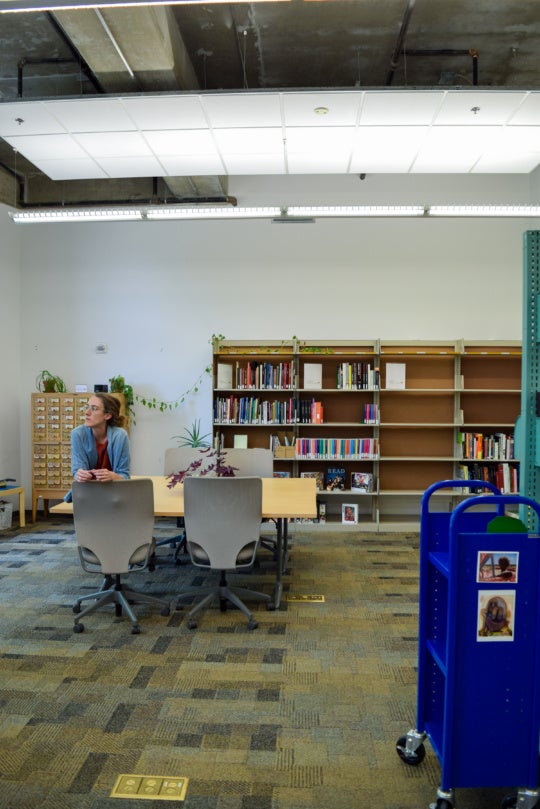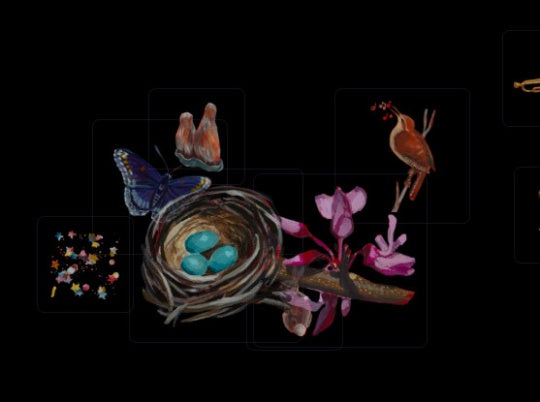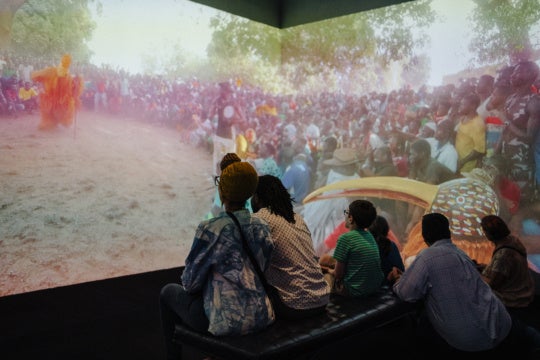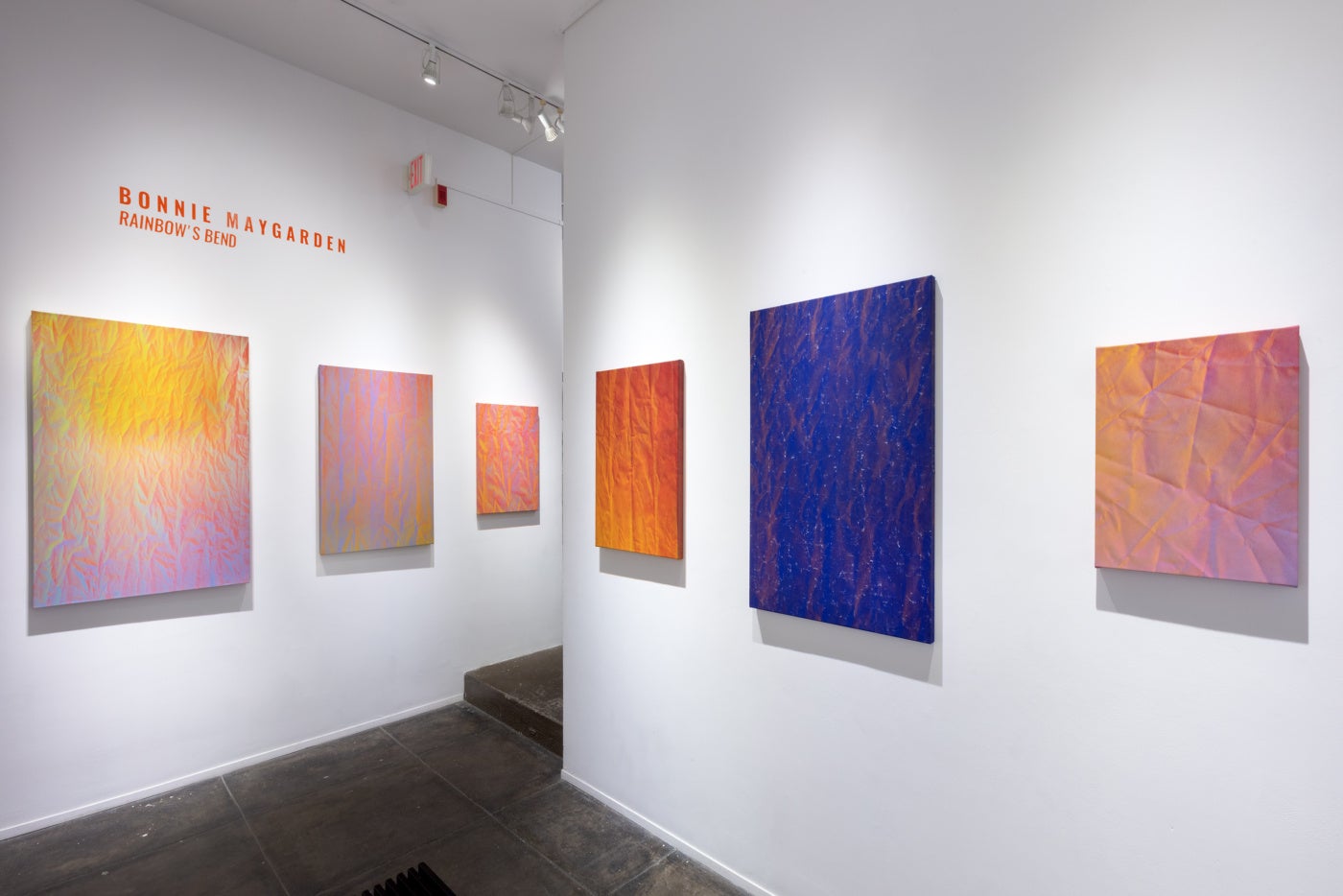
Art has long been inspired by the use and stylization of drapery and fabrics. Classical Greek sculpture is testament to the fact that authority, allurement, prophecy and power can all be rendered within the pleats and crimpage of folded cloth. On a spring day in 1953, Aldous Huxley, under the influence of mescaline, came to realize the import of artists’ fascination with “the inexhaustible theme of crumpled wool or linen.” Huxley detailed French painter Jean-Antoine Watteau’s expressive use of fabric in the following way: “Not an inch of smooth surface here, not a moment of peace or confidence, only a silken wilderness of countless tiny pleats and wrinkles, with an incessant modulation—inner uncertainty rendered with the perfect assurance of a master hand—of tone into tone, of one indeterminate color into another.”1 Surveying Rainbow’s Bend—Bonnie Maygarden’s exhibition at Ferrara Showman Gallery—one can observe the continuation of the same inexhaustible theme.
Atlanta-based Bonnie Maygarden’s fourth solo show at the gallery finds the artist expanding upon the illusory surfaces that have become the defining feature of her work. As in the world of digital design, gradients are ubiquitous in Maygarden’s paintings. In the same way that gradients mask flatness and add dimensionality to digital surfaces, gradients here serve to amplify the impression of space, mimicking proximity to a light source. A thermal register is made clear in Closer to the Sun, where imagined heat emanates from the lower left-hand corner, traversing diagonally to the upper right while speckled embers dance across the canvas. Patient inspection rewards the viewer and animates the experience of the work—details often emerge only after extended scrutiny.
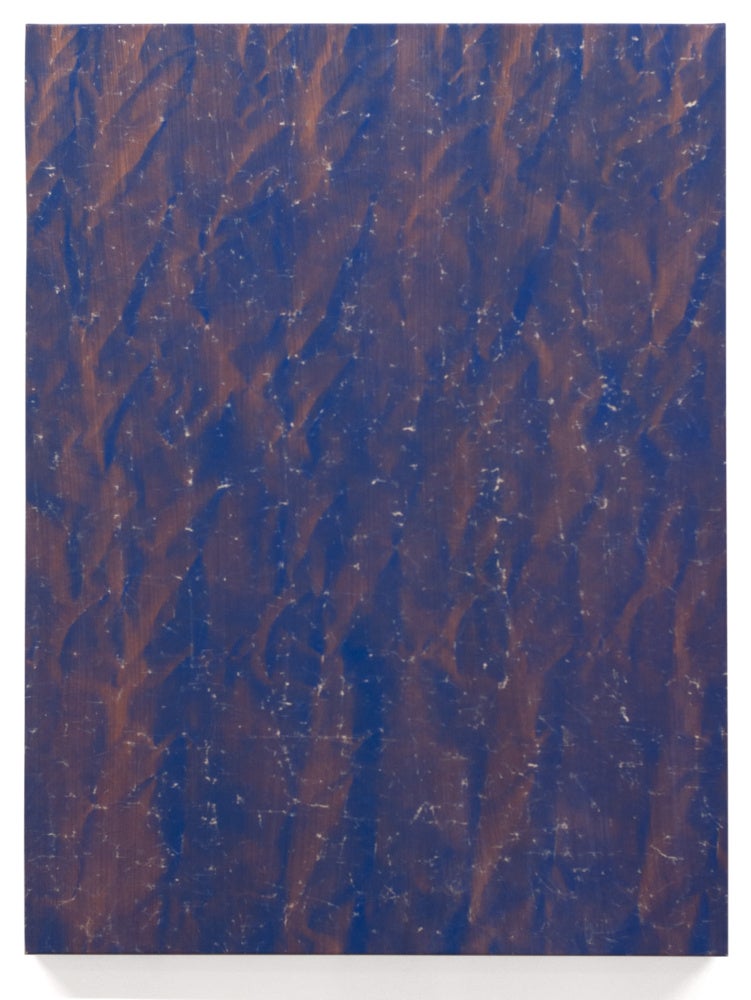
Ferrara Showman’s rear gallery bristles with discursive energy, as Maygarden’s multivariate paintings overwhelm the relatively narrow space. Differences in scale and material guide the grouping of individual works. The artist’s dynamic use of tulle fabric is a prominent feature of Bound, a piece like an undulating pane of glass looped and knotted underneath with rope. Transposed onto semi-transparent netting, Bound’s cascading composition achieves the fuzzy enjoyment of a fever dream—its layers oscillating between airy intangibility and structural skeletonization with the ease of liquid mercury.
Diverse phenomena is conveyed via abstraction. Damages II seems to simultaneously allude to lesions on an MRI, scratch marks distributed over the satellite imagery of an extraterrestrial landscape, and milky static caused by the surface tension problems of a printer. Despite these tenuous allusions, the imagery remains non-specific. Like the majority of works on view, Damages II suggests the continuation of a field beyond the bounds of the frame—an isolated slice of terrain—extracted as an outstanding specimen by the artist.
There’s an implicit debt to Tauba Auerbach’s Fold paintings—a series begun in 2009, in which the artist spray painted across creased, crumpled, and folded canvases. Once stretched, the paintings retained a record of their previous three-dimensional state, impressing a similar crinkled illusion of depth across the surface. While outwardly alike, the concerns underpinning each artist’s work are different. A process-based investigation of interdimensionality is foundational to Auerbach’s artwork, while Maygarden has fully embraced the playfulness of trompe-l’oeil. Case in point is Maygarden’s A Void, where two dots hover over a texture like a digitally grafted rock face. At a distance the two dots are indistinguishable from one another—however, closer inspection reveals the top dot to be an actual hole bored into the canvas. These painterly deceptions extend to a new body of work that reproduces the warp and weft of nylon hosiery. Titled Holes, the illusion of stretched nylon is so convincing that it’s only dispelled at an inch away. As a consequence of faithful rendering and hosiery’s relationship to the human form, the pieces feel like forensic evidence, lacking the visual appeal of the other paintings. Holes absence of color—aside from the framing—lends the quartet a stark character akin to a cosmic vacuum—the structural latticework of the starry void.
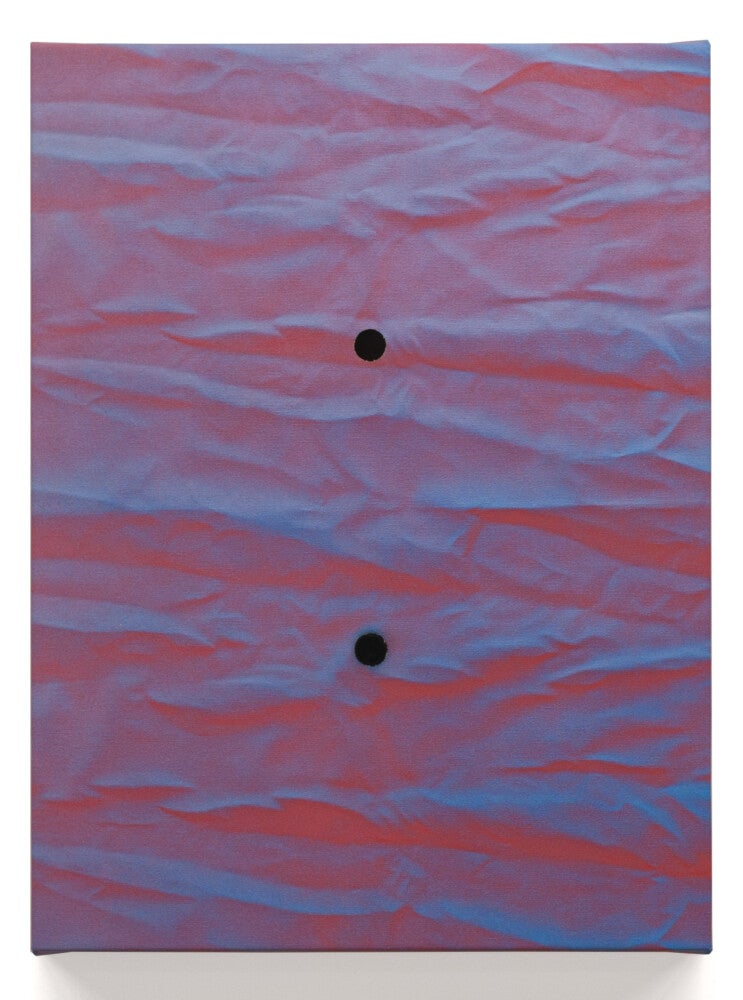
Underneath the wall title is the namesake painting Rainbow’s Bend—a prismatic showpiece whose iridescent luster is likely impossible to reproduce in images online. Hues arc and weave from faded purple to sage, advancing into goldenrod and dark peach. The artist’s work is exalted by her use of color. Rainbow’s Bend is an occasion where Maygarden is able to outstrip her formula, harnessing the movement of light into a dazzling array of chromatic possibilities. Tracking the curvature of Rainbow’s Bend and arriving in its wake, we catch sight as Maygarden reimagines the mirage, offering up hints of real gold.
[1] Huxley, A. (1970). The Doors of Perception (Perennial Library Edition). Harper & Row, p. 32.
Bonnie Maygarden: Rainbow’s Bend is on view at Ferrara Showman Gallery through July 13, 2024.

